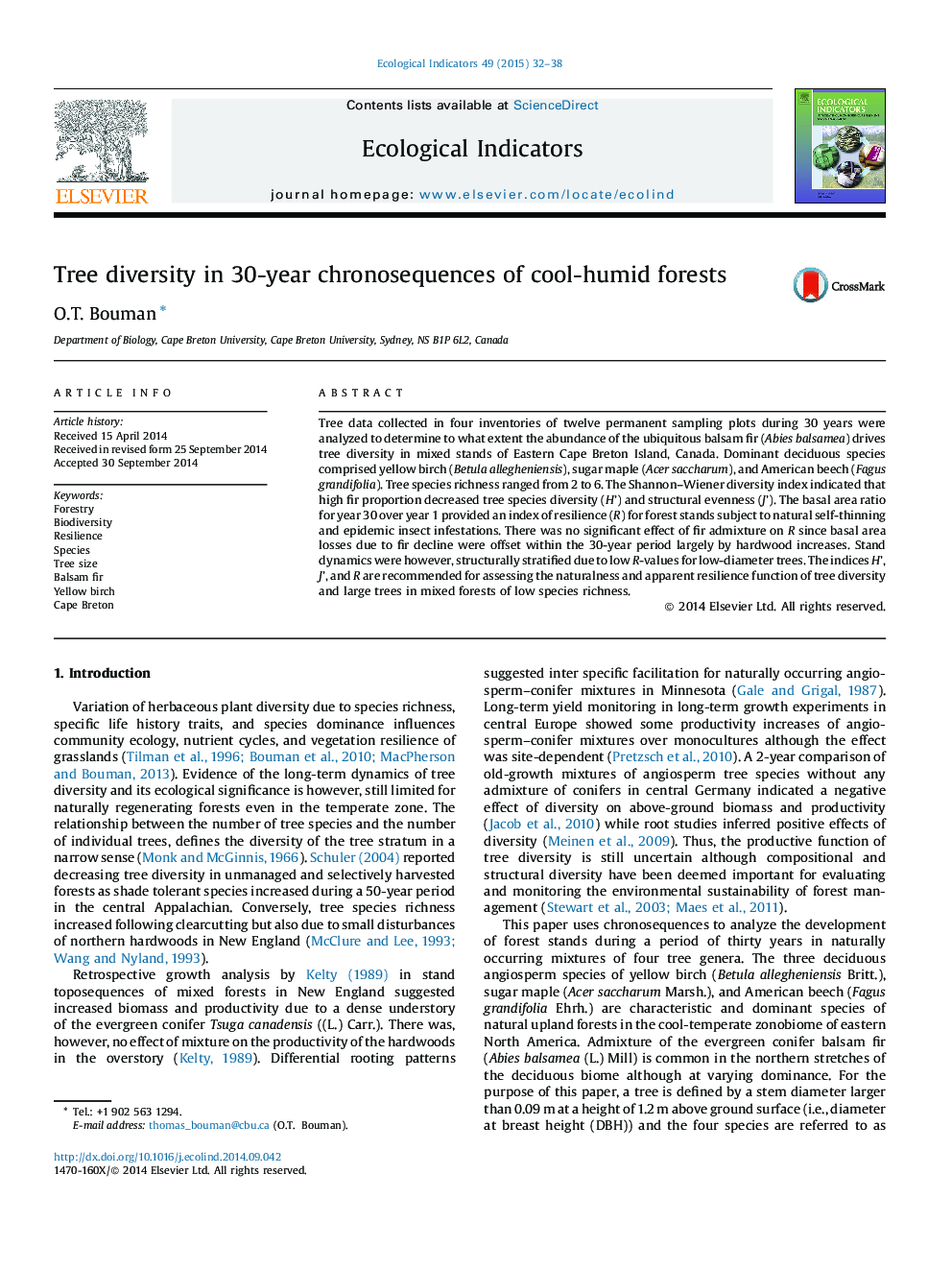| Article ID | Journal | Published Year | Pages | File Type |
|---|---|---|---|---|
| 6294775 | Ecological Indicators | 2015 | 7 Pages |
â¢Spatio-temporal variability of tree diversity stayed within narrow limits.â¢High fir proportion decreased tree species diversity and structural evenness.â¢Basal area losses due to fir decline offset by hardwood increases.â¢Stand dynamics structurally stratified due to low resilience of small trees.â¢Tree species diversity conferred resilience at the stand level.
Tree data collected in four inventories of twelve permanent sampling plots during 30 years were analyzed to determine to what extent the abundance of the ubiquitous balsam fir (Abies balsamea) drives tree diversity in mixed stands of Eastern Cape Breton Island, Canada. Dominant deciduous species comprised yellow birch (Betula allegheniensis), sugar maple (Acer saccharum), and American beech (Fagus grandifolia). Tree species richness ranged from 2 to 6. The Shannon-Wiener diversity index indicated that high fir proportion decreased tree species diversity (H') and structural evenness (J'). The basal area ratio for year 30 over year 1 provided an index of resilience (R) for forest stands subject to natural self-thinning and epidemic insect infestations. There was no significant effect of fir admixture on R since basal area losses due to fir decline were offset within the 30-year period largely by hardwood increases. Stand dynamics were however, structurally stratified due to low R-values for low-diameter trees. The indices H', J', and R are recommended for assessing the naturalness and apparent resilience function of tree diversity and large trees in mixed forests of low species richness.
